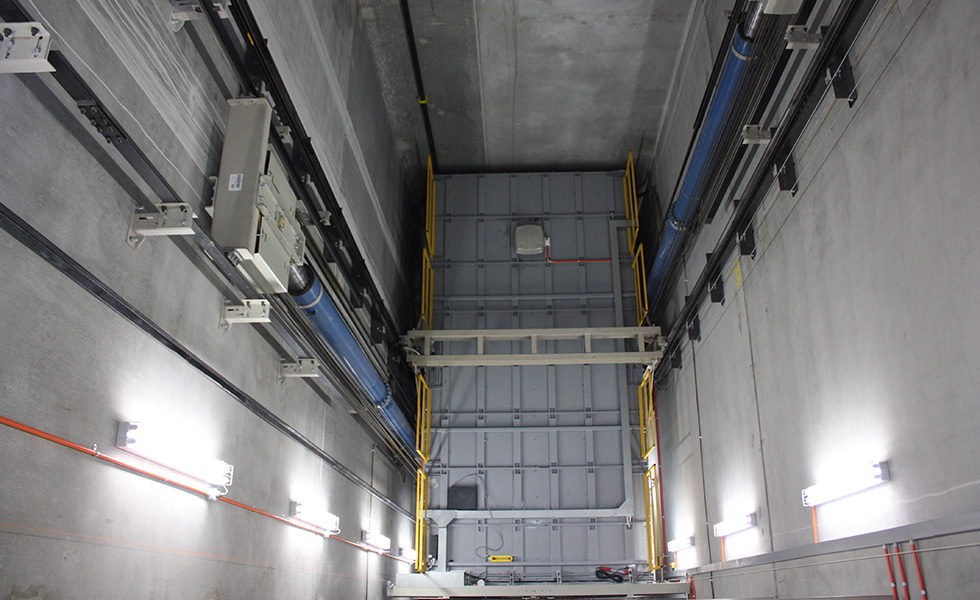Comprehending System Lift Capacities: Crucial for Reliable Lift Service
Wiki Article
A Comprehensive Technique to Enhancing Efficiency Through Strategic Lift Repair Work Strategies
In the realm of center administration, the performance and reliability of lifts play a critical function in guaranteeing seamless procedures. A systematic and calculated method to lift repair and upkeep is crucial to make best use of performance and reduce downtime. By resolving usual lift concerns, executing positive upkeep steps, and creating targeted fixing plans, centers can optimize their lift systems to operate at peak efficiency levels. Nevertheless, the key to accomplishing sustained renovation depends on using data-driven understandings to educate decision-making processes and drive constant improvement. This detailed technique to enhancing lift performance via critical fixing techniques holds the guarantee of not only boosting operational effectiveness but also extending the life expectancy of lift systems.Significance of Lift Efficiency Optimization
Understanding the relevance of maximizing lift performance is crucial for making certain efficient and reputable upright transport systems in various structures and frameworks. Lifts are important parts of contemporary infrastructure, supplying vertical wheelchair for residents and items within buildings of varying heights. By optimizing lift efficiency, building owners and facility supervisors can improve customer experience, enhance energy effectiveness, and rise overall functional effectiveness.Effective lift efficiency optimization entails numerous factors, consisting of speed, capability, power upkeep, intake, and safety and security requirements. Effectively maximized lifts can decrease wait times for customers, particularly in high-traffic buildings, causing enhanced satisfaction and performance. Additionally, enhanced lifts add to energy savings by using sophisticated control systems and innovations that reduce power usage without jeopardizing performance.

Identifying Common Lift Issues
Determining typical lift problems is important for preserving the operational efficiency and safety and security of vertical transportation systems in buildings. This concern can be indicative of troubles with the lift's electric motor, control system, or even the alignment of the lift automobile.One more prevalent lift problem is strange noises rising from the lift shaft or equipment room. These sounds can range from grinding or scratching audios to loud clunking sounds, all of which might indicate underlying mechanical issues that require instant attention. Furthermore, constant door breakdowns, such as doors closed or shutting correctly, can interfere with the smooth flow of passengers and pose safety risks.
Executing Positive Upkeep Measures
To optimize the performance and long life of lift systems, positive upkeep actions play an important duty in ensuring functional dependability and safety. platform lift dimensions. Executing aggressive upkeep involves methodically evaluating, maintenance, and repairing parts prior to they fail, thus preventing expensive downtime and potential safety risks. On a regular basis scheduled evaluations can assist determine minor problems before they escalate into major problems, ultimately extending the life-span of lift systemsOne secret element of aggressive maintenance is creating an in-depth upkeep schedule based upon producer recommendations and industry finest techniques. This schedule needs to lay out tasks such as lubrication, placement checks, and element replacements at specified intervals. Furthermore, carrying out condition tracking techniques, such as vibration evaluation and thermal imaging, can help spot early indicators of wear or malfunction.
Additionally, training upkeep staff on correct evaluation strategies and precautionary upkeep treatments is essential for the effective implementation of aggressive maintenance procedures. By cultivating a culture of proactive upkeep within a company, lift systems can run at peak performance levels, reducing disturbances and making certain the safety and security of users.
Establishing Targeted Repair Service Plans
Upon examining the upkeep records and efficiency information, the design group can create targeted repair service plans to optimize and resolve details problems lift system performance. These fixing plans are tailored to the recognized issues, making certain that resources are concentrated on solving critical concerns effectively. By focusing on repair services based upon their effect on performance and safety and security, the targeted repair service strategies aid decrease downtime and upkeep prices while optimizing the lift system's integrity.Establishing these strategies involves a complete analysis of the lift system parts, including electric motors, cables, brakes, and control systems. With this in-depth assessment, the design team can figure out the origin of any kind of breakdowns or destruction in efficiency. This information is then utilized to produce a roadmap for the repair service process, detailing the needed steps, timeline, and sources called for to deal with each issue efficiently.
Furthermore, targeted repair strategies might consist of preventative procedures to boost the lift system's durability and efficiency. By proactively dealing with potential issues before they rise, these strategies contribute to the general performance and safety and security of the lift system.
Using Data-Driven Insights
Using the power of data-driven understandings is important in maximizing lift system efficiency and upkeep efficiency. These anticipating upkeep strategies help stop unexpected breakdowns, minimize downtime, and expand the life expectancy of lift systems.
Conclusion
In final thought, maximizing lift performance is crucial for guaranteeing efficiency and safety and security in buildings. By determining common lift issues, applying aggressive platform lift dimensions maintenance procedures, establishing targeted repair work plans, and making use of data-driven understandings, companies can enhance performance and minimize downtime. It is very important to take an extensive strategy to raise fixing strategies to maximize functional effectiveness and make certain the durability of lift systems.By attending to common lift issues, applying proactive upkeep measures, and creating targeted repair work strategies, facilities can optimize their lift systems to run at peak performance levels.An additional prevalent lift concern is strange sounds rising from the lift shaft or machinery space.Upon evaluating the upkeep documents and performance data, the design team can develop targeted repair work plans to enhance and resolve specific problems lift system performance. By prioritizing repair services based on their impact on performance and security, the targeted fixing plans assist decrease downtime and maintenance costs while optimizing the lift system's integrity.
It is crucial to take a thorough approach to lift repair work techniques to maximize operational effectiveness and make certain the long life of lift systems.
Report this wiki page